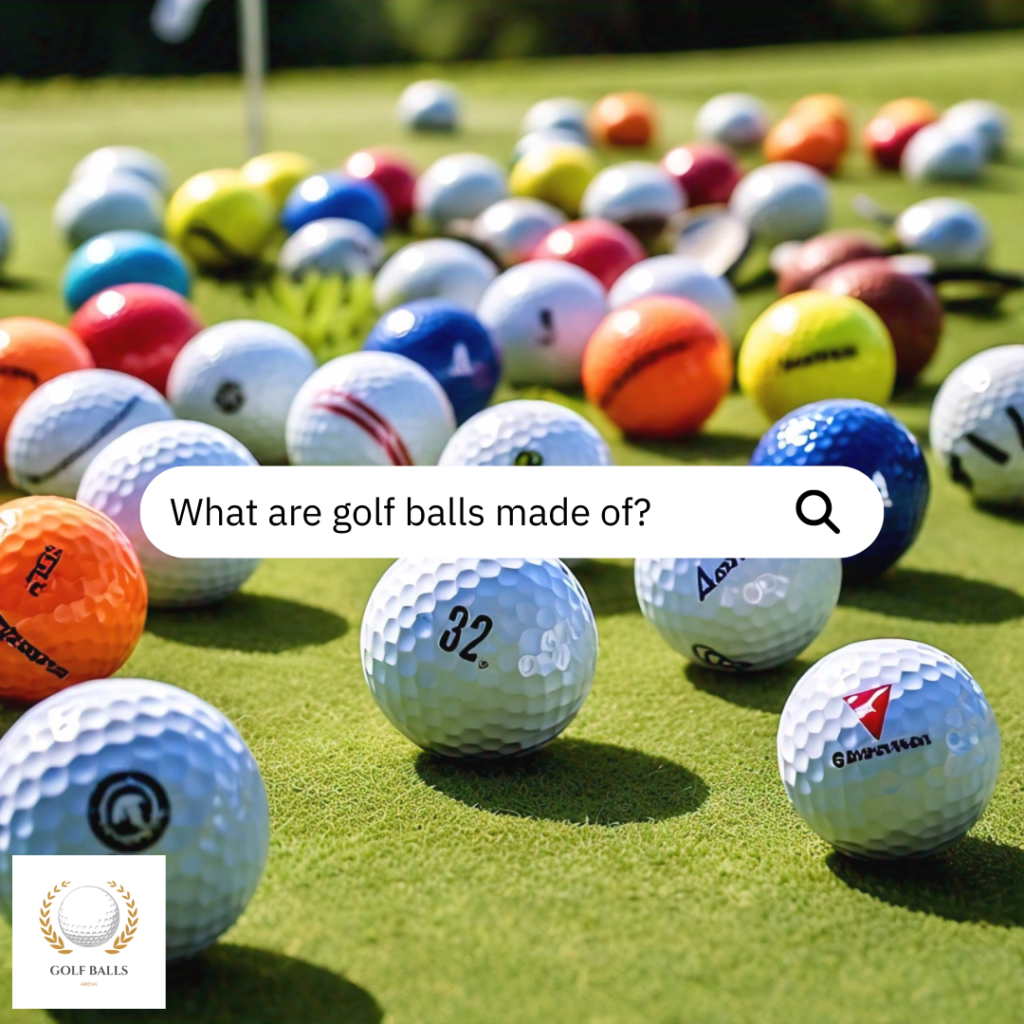
What are golf balls made of and how do they affect your game?
Why is it that some golf balls are more excellent off the tee than others? Its external appearance doesn’t reveal what is hidden in it. By the end of this article, you shall be in a position to determine just what golf balls are made of and how these materials are going to affect your game.
Recognizing this is the method of choosing the right ball for your style and improving on your general strategy.
Where does the golf ball execution begin? (CORE)
The hub of a golf ball is the engine of the spectacle that it performs.
Material Breakdown:
The core constructed in elastic or engineered materials is used in most golf balls. These materials are supposed to affect the further behavior of the ball after influence has occurred. Often, golf balls contain so-called elastic centers, which are usually delicate and springy. Polybutadiene is a material that is likewise inclined to be used because of its versatility and high strength.
Influence on Play:
The material at the center directly conveys distance, feel, and pressure. Milder centers will generally provide more ‘feel’ and control, which is convenient for short shots, while on a firmer center, you can achieve more distance. Pressure levels also define the amount of energy that is transferred from the club to the ball. High pressure was appropriate for the players who have small and fast movement of the club, while low pressure fits the players who move the club slowly.
Pro Tip:
So, if you are below the 90 mph swing speed, look for a ball with low pressure at the center, as this will provide the extra distance. Faster movers should always select high pressure that improves control, and the same applies to power.
What is swing speed?
Swing speed suggests the frequencies with which the clubhead moves at the moment of impact with the golf ball. They include velocity, which is generally measured in miles per hour (mph). Professional golfers can use various apparatus, like, for instance, radar gadgets or ship-off displays, to calculate the definite speed of a golf swing.
The External Cover: Durability New Meets Precision
Material Conversation:
Golf ball covers are commonly manufactured employing materials such as urethane and, in some cases, Surlyn. Urethane is softer and provides more spin and stopping power for the golf ball and is best suited for gifted golfers wanting to improve chipping and putting. Surlyn is a more rigid material that gives control, better solidity, and distance but lacks the twist.
Game Improvement:
The type of material used for the cover determines the twist, feel, and overall rigidity of the bag. On the green, halting power is obtained from urethane-covered balls, mainly if it is used as an approach shot. Surlyn is amazing for beginners or forgiving players who need more distance and are not concerned with the spin.
Choice Tip:
The type of material used for the cover determines the twist, feel, and overall rigidity of the bag. On the green, halting power is obtained from urethane-covered balls, mainly if it is used as an approach shot. Surlyn is amazing for beginners or forgiving players who need more distance and are not concerned with the spin.
Understanding Golf Ball Construction
Multi-facet Development:
This inclination is what I described in the previous chapters as fitting the ball to the game, in which the use of good balls is done according to the game being played and the kind of course that is being used. There are golf balls in increased development, and each has unique benefits owing to your skill set and style of play.
Kinds of Development:
The two-piece balls are made up of a solid core and a cover and, therefore, give the most significant distance and strength. There are three-piece and multi-facet balls with additional layers that allow players to fine-tune, for instance, turn and texture.
Customization of Play:
Two-piece balls are distance-and-reasonable and, thus, ideal for beginners. Three-piece and multi-facet balls are for the moderate and high-level players and provide control, and increase the spin and flexibility necessary for different kinds of shots.
Purchasing Tip:
If you are a beginner or someone with a slow swing, it is advised to use two-piece balls. Enhanced players should look at multi-facet balls to get some additional control, assuming that you are more straightforwardly worried about improving your short go short game.
Conclusion:
What are the materials used in manufacturing golf balls, and what are golf balls made of? Are of more significance than you may imagine. About its construction, each of the layers takes a role in how the ball behaves on the course. Knowing this material can help you choose the right ball for yourself and hence improve your play on the field and also make the experience fun.
FAQS
The material used in the production of the golf balls determines the distance, control, and feel of the game.
From this, producers employ machines to emulate the swing velocities and the situation and evaluate parameters such as distance, twist, and strength.
Totally. Balls constructed from urethane and multi-faceted development will, in most cases, be more expansive than basic two-piece types.
Coldness can make the ball to be hard to control and reduce flight while intensity can make it to be more twirl.
Hi, I'm Austin Grey. I've been passionate about golf since 2005, and over the years, I've immersed myself in every aspect of the game. With nearly two decades of experience, I've developed a deep expertise in one particular area: golf balls. I created this blog to share everything I've learned about golf balls with fellow enthusiasts like you. Here, you'll find detailed reviews, insightful tips, and comprehensive guides to help you choose the perfect ball for your game. Whether you're just starting out or have been playing for years, I'm here to help you enhance your golf experience, one ball at a time.
